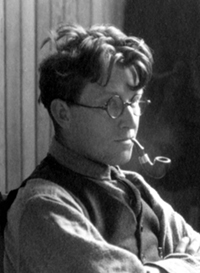Caltech's First Grad Students
Our Winter 2015 issue highlighted PhD students’ efforts to navigate copious amounts of coursework, lab work, and teaching duties as well as their personal lives. Here we look at two of Caltech’s pioneering graduate students: Roscoe Dickinson, who earned the Institute’s first PhD, and Dorothy Ann Semenow, the first female graduate student at Caltech.
Roscoe Dickinson
Roscoe Dickinson in 1923
Dickinson joined Caltech in 1917 after completing his undergraduate education at MIT. According to Judith Goodstein’s history of the Institute, Millikan’s School, Dickinson began working with Arthur Amos Noyes, the founder and first director of the Gates Chemical Laboratory on a then-pioneering technology: X-ray crystallography, a technique to help determine the atomic configurations of crystals.
Dickinson went on to receive a doctorate in chemistry as Caltech’s first PhD recipient in 1920, shortly after the school changed its name from the Throop College of Technology to its current title. He then joined the faculty as a professor of chemistry, mentoring promising graduate students including Linus Pauling (PhD ’25), who went on to become a two-time Nobel laureate, and Arnold O. Beckman (PhD ’28), who later invented the pH meter and was a longtime trustee and benefactor of Caltech.
Dorothy Ann Semenow
After getting her chemistry degree at Mount Holyoke and studying at MIT, Semenow joined Caltech as its sole female student at the invitation of John D. Roberts, Institute Professor of Chemistry (now emeritus). On arrival, she pursued research in theoretical organic chemistry, earning a PhD in chemistry and biology in 1955.
Dorothy Ann Semenow in photo from a 1953 article in E&S magazine.
Roberts, who in a 1985 interview described Semenow as “a superb student … an excellent perseverer, a very sharp mind [and] a very good experimentalist,” said that, with her in mind, he worked with Linus Pauling to persuade the Institute administration to rescind the rule, then in force, prohibiting women from enrolling.
A July 2, 1955, article in the Pittsburgh Post-Gazettenoted that she was permitted to enroll once “the school let down the barrier against her sex in favor of ‘women who give promise of great scientific contributions.’”
It also noted that by earning her PhD at Caltech, Semenow, then 25, had “cracked a male fortress.”


